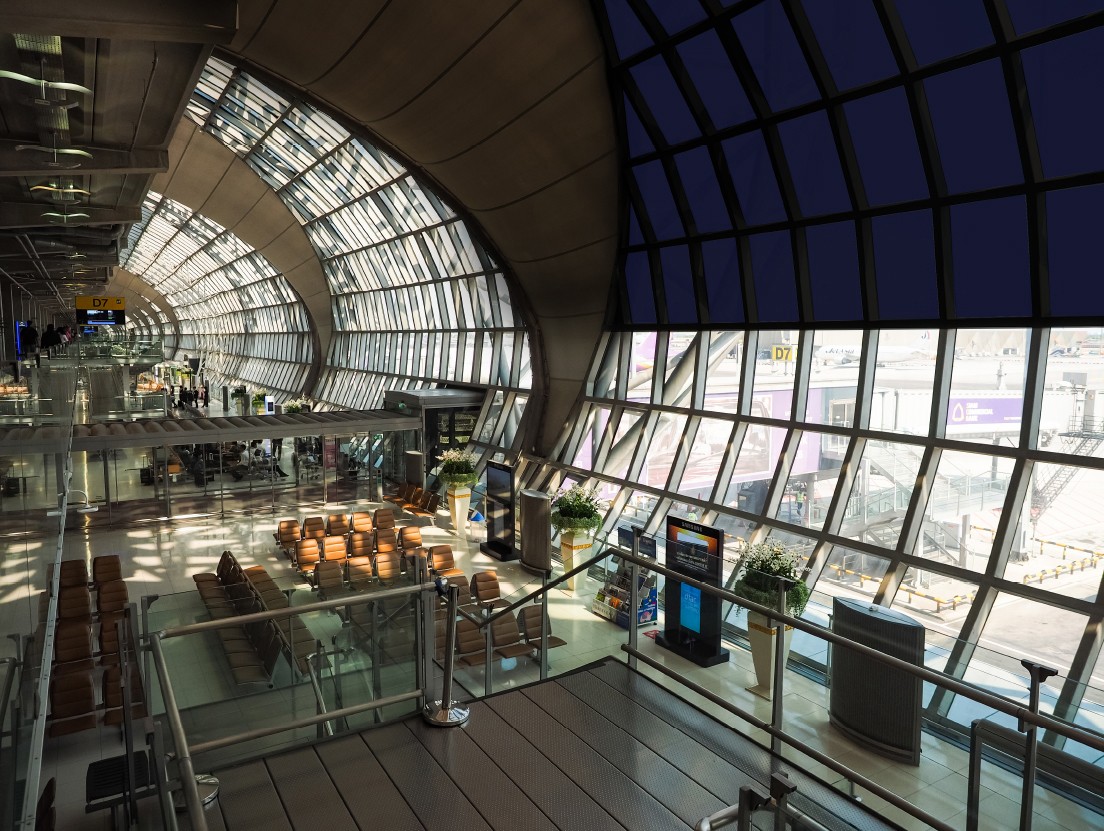In this article, we delve into dimmable glass and dimmable windows: what it is, how it is made and its many benefits, making it the go-to solution for architects, designers and builders around the world for dynamic shading and privacy applications.
The use of glass comes with an age-old dilemma: do its advantages of affording views and letting in natural light offset its lack of ability to provide shade without obstructing views and interfering with its minimalist appeal? This is an important question, as the use of glass is becoming ever more popular in architectural installations around the world.
Fortunately, Gauzy offers the perfect solution: SPD (Suspended Particle Device) technology. Also known as dimmable glass, switchable glass, smart glass and privacy glass, SPD can have transparency or instantly dim to block up to 99% of light in seconds,, making it ideal for custom shading and privacy in outdoor windows.

What is Dimmable Glass and How is it Made?
“Smart glass” is glass with an application of coatings and films that changes its appearance and function when activated by an electrical charge. Dimmable glass and dimmable windows are made using smart glass technology, enabling glass to switch from clear to shaded or opaque on demand.
The light transmission properties of active smart glass with SPD change when voltage is applied, turning transparent or translucent at the click of a button. When the electrical supply is switched on, light passes through and the panels become clear. When switched off, they become opaque. Smart glass can be used by architects, interior designers and contractors for diverse applications, including commercial spaces, hotels, retail stores, hospitals and residential towers. The technology is already highly adopted by the automotive industry, where it’s used by Mercedes and McClaren in sunroofs.
SPD smart glass works by altering the amount of light transmitted through the glass by utilizing a low-voltage electrical current and an embedded layer of Suspended Particle Device (SPD) particles. When the current is turned on, the SPD particles form a pattern that make the glass transparent. When it is turned off, those particles return to a random pattern, causing the light to diffuse and the glass to become opaque. As a result, the glass changes appearance within a matter of seconds, instantly transforming a space from light to shaded.
How SPD Works
Dimmable glass, which is used primarily for shading, is created by placing millions of light-absorbing microscopic SPD nanoparticles on film. The film is then laminated between two panels of glass or polycarbonate with adhesive interlayers that are coated with a transparent conductive material. These rod-like particles are suspended in a matrix consisting of an inner layer of SPD plastic film that is coated with a conductive material such as Indium Tin Oxide (ITO). When electrified, the SPD particles line up in a straight line, allowing light to flow through. When the electricity is turned off, they move back into a random pattern, blocking light. As the amount of voltage is decreased, the dimmable window continues to darken.
It is possible to control the amount of light, heat and glare passing through dimmable windows, eliminating the need for permanently tinted glass and resulting in energy savings on lighting, shading and cooling costs.
Dimmable windows created with SPD technology are ideal for shading because they can block up to 99% of light, with a switching speed of as little as 3 seconds, no matter the size of the glass. SPD smart glass is outdoor grade, making it suitable for a variety of applications. While it has been popular in the transportation sector for use in automobiles, trains and airplanes, it can now be manufactured in larger panes, making it an excellent choice for architectural applications of any kind, including windows, skylights, atriums and facades.
The Benefits of Using Dimmable Windows in Your Project
There are many reasons to incorporate smart glass technology into your project. The primary advantage is its ability to instantly transform any space, creating custom levels of shading without the need for blinds or curtains. Smart glass also has a sleek, modern aesthetic and is easy to clean and maintain. In addition, its transmittance, or level of transparency, is adjustable, so you can create the ambience that suits your needs.
Here are some additional advantages of using dimmable glass:
- Unobstructed access to panoramic views
- Glare reduction
- Energy efficiency
- Longevity (lasts longer than blinds or curtains)
- Protection from UV rays to protect people and furnishings
- Easy to customize to accommodate many shapes and sizes
- Can be used with curved and bent glass
- Easy to clean and maintain
- Aesthetically pleasing, with a clean, contemporary look
- Sound dampening effect
- Light optimization and control
Are Dimmable Windows Right for Your Project?
The answer is a resounding yes! Here’s why:
- Reduce Energy Bills. In buildings with dimmable glass facades or windows, there is a diminished need for air conditioning during the summer months and heating during the winter months, resulting in thousands of dollars of cost savings.
- Let the Sunshine In. Dimmable glass can switch to transparent to maximize daylight when necessary, and provide solar shading when the sun is at its highest. Its ability to shade and provide privacy create optimized working conditions.
- Oh what a view! Without the need for blinds, dimmable windows offer unobstructed views of the great outdoors, contributing to a sense of well-being for those inside. As architectural projects continue to sway toward full glass facades, SPD smart glass is the clear application of choice to maintain the minimal appearance of buildings – inside and out.
The beauty and efficiency of SPD dimmable glass windows or façade cannot be underestimated. From sleek and sophisticated corporate headquarters to dazzling flagship stores, its options are infinite.
Want to learn more about Smart Glass or receive a quote? Contact the Smart Glass experts at Gauzy today.









